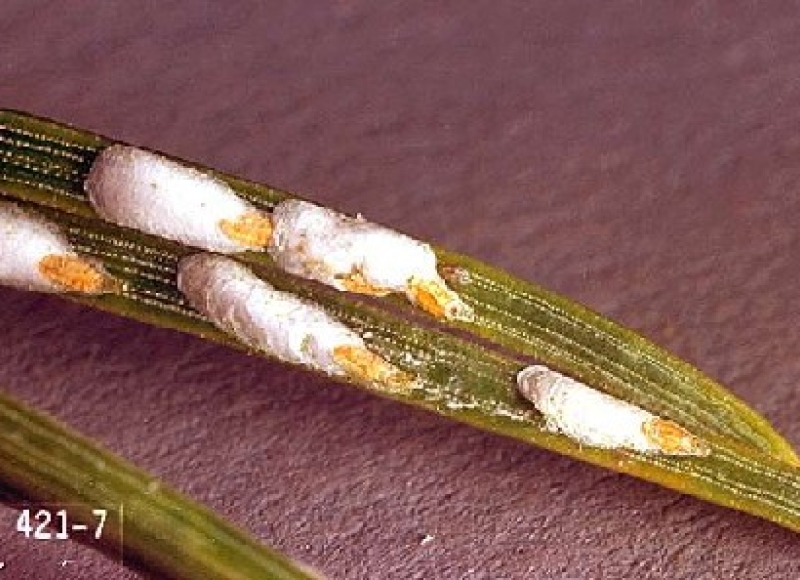Pine needle scale, Phenaeaspis (Chionaspis) pinifoliae, is an armored scale found on pine and sometimes other conifers such as spruce, fir, hemlock, Douglas fir, and occasionally cedar.
Pine needle scale overwinters as eggs under the dead mother scale. Dormant oil applications targeting the overwintering stage are not thought to be very successful. Most management is aimed at the crawler stage, when the bright red newly hatched scale emerge and begin to disperse. In Oregon this spring hatch of crawlers occurs in May through June. In Illinois they use the phenological indicator, Vanhoutte spirea, Spiraea x vanhouttei, which is in bloom when the crawlers hatch.There are two generations of pine needle scale per year with the second- generation hatch around mid-late July. Again, in Illinois, they treat second-generation crawlers may be treated when hills-of-snow hydrangea, Hydrangea arborescens, blooms turn from white to green. Unlike with the first generation in the spring when crawlers emerge over a 7-10 day period, the second generation eggs may hatch over a two-three week period and so repeat applications 7-10 days apart are recommended.
There are several websites with good information on pine needle scale:
Boggs, Joe. 2017. First Generation Pine Needle Scale Crawlers are Afoot. Buckeye Yard and Garden Online. April 25, 2017. It has the fantastic images of the young crawler stages and developing scale. <28 February 2019>
Hoover, G. 2002. Penn State's Woody Ornamentals Integrated Pest Management: Pine needle scale.
Fondren, K. and D. McCullough. 2002. Biology and Management of Pine Needle Scale. University of Minnesota. Ext. Bull. E 2812. June 2002. <28 February 2019>
Orginal publication 4/12/06
Lastest revision <28 February 2019>
Author: R.L. Rosetta, Extension Nursery Integrated Pest Management, Department of Horticulture, Oregon State University/NWREC.


